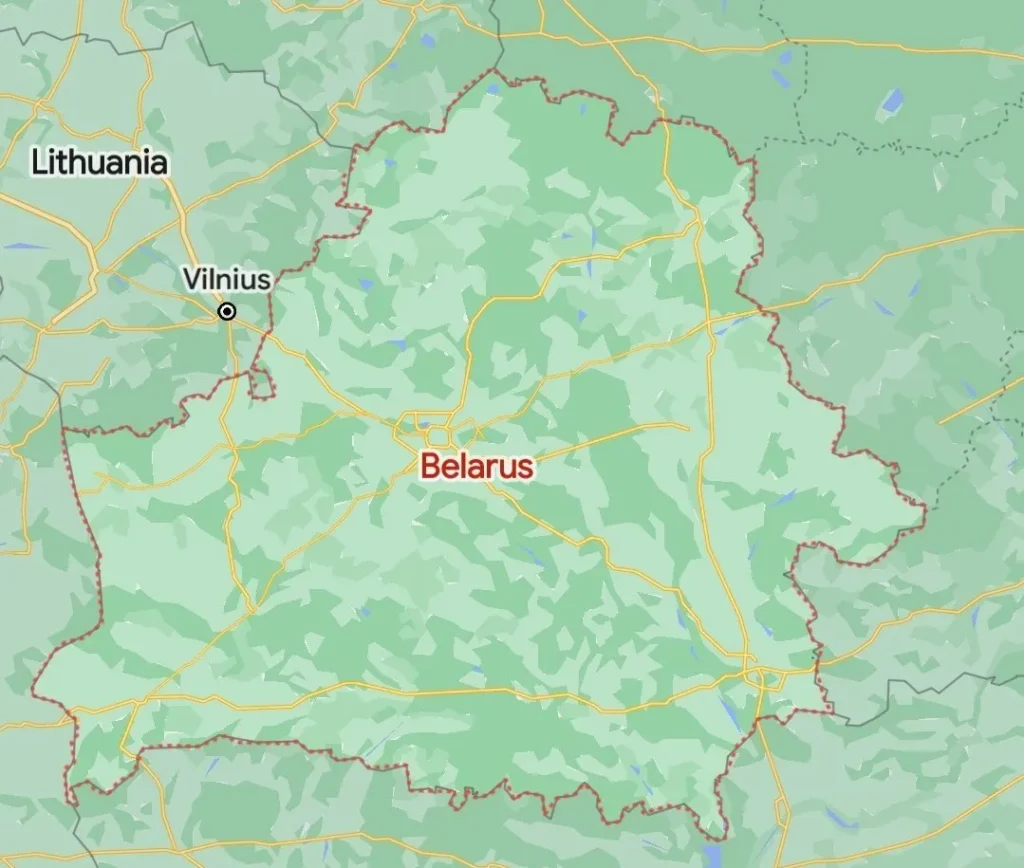Belarus isn’t some loud tourist hotspot, but once you scratch the surface, it’s got a soul that pulls you in. It’s squeezed between Russia, Ukraine, Poland, and the Baltics, and its culture’s a mash-up of old Slavic roots, Grand Duchy of Lithuania glory, Soviet tough times, and a stubborn pride that’s all its own. The real Belarus isn’t in shiny malls or big-name sites, it’s in the way folks laugh at festivals, cook up hearty meals, weave ancient crafts, and tell stories that’ve lasted centuries. Picture potato pancakes frying in a Minsk kitchen or knights duking it out at Mir Castle’s medieval bash, that’s the heartbeat of this place. It’s tough, warm, and full of life. Let’s dig into what makes Belarus tick, from the food on the table to the songs in the air, with some off-the-beaten-path details to show you its true colors.

Quick Look at What’s Coming
- How Belarus’ history shapes its unique cultural mix.
- What dishes like draniki and kvass mean to everyday life.
- Why festivals like Kupalle and Maslenitsa bring people together.
- The crafts, like Slutsk belts, that tell old stories.
- How music and books show the country’s spirit.
- Ways visitors can jump in and respect the traditions.
Where Belarus’ Culture Comes From
Belarus didn’t just wake up like this; it’s been shaped by a wild ride through history. Way back around the 6th century, Slavic tribes moved in, mixing with Baltic folks already there. By the 9th century, it was part of Kievan Rus’, bringing in early Christianity and writing on birch bark. Then the Grand Duchy of Lithuania rolled in during the 13th century, turning places like Polotsk and Grodno into trade hubs with cool art and big ideas. After that, it dealt with Polish rule, Russian takeovers, and the Soviet grind, but it held onto its own flavor. The Belarusian language, a blend of Old Church Slavonic and local talk, got stomped on but never died; people still cherish it, even if Russian dominates in the cities. That’s the backbone of Belarusian culture: it’s been kicked around but keeps standing tall.
Food That Brings People Together
Food in Belarus is like a hug from your grandma, simple, filling, and full of love. Potatoes are the star; they’re everywhere. Draniki, those crispy potato pancakes, are a must; slather them with sour cream or butter, and you’ve got a taste of home. You can grab them at a street cart in Minsk or a village kitchen. Borsch, that deep red beet soup, is another classic, loaded with veggies and maybe some pork if it’s a special day. Kalduny, tiny dumplings stuffed with meat, mushrooms, or potatoes, are boiled or fried and hit the spot. For drinks, kvass, made from fermented rye bread, is a tangy summer treat you’ll see kids sipping. And if you’re brave, samogon, the homemade hooch, flows at weddings or family gatherings, with toasts that go late into the night.
It’s not just about eating, food’s how Belarusians connect. If you’re a guest, expect a table piled high with dishes and someone pushing you to try more. That old bread-and-salt welcome, round rye bread with a sprinkle of salt and a hearty “Sardechna zaprashayem!” (welcome), is still a thing at big events. And don’t sleep on tvorog, a fresh cheese like a creamy cottage cheese. Locals eat it with honey for breakfast, and it’s a quiet little treasure. Bring an appetite if you visit; they’ll take it personal if you don’t dig in.
Festivals That Show the Spirit
Belarusians know how to have a good time, and their festivals are where the fun and history collide. Kupalle, around July 6-7, is a midsummer blast with pagan roots tied to the god Kupala, blended with St. John the Baptist vibes. People light bonfires, leap over them for luck (watch your eyebrows), and float flower wreaths on rivers. There’s a fun myth about a fern flower blooming that night, if you “find” it, you can talk to animals or find gold. It’s all about music, dancing, and feeling the earth under your feet.
Maslenitsa, before Lent, is a week of winter-busting fun. Pancakes stack up (they’re sun symbols), kids have snowball fights, and they burn a straw winter effigy to kick it goodbye. Radunitsa, two weeks after Easter, is more solemn; families head to cemeteries with food and drinks to remember the dead, turning sadness into a celebration of life. Then there’s Slavianski Bazaar in Vitebsk, a huge music and arts party that’s been going strong for over 30 years. Think local folk tunes mixed with global acts, it’s a party with a purpose, keeping culture alive. These events aren’t just holidays; they’re how Belarusians stick together.
Crafts That Hold the Past
Belarusian crafts are like walking into a history book. Slutsk belts, woven with fancy patterns and gold thread, were big for nobles in the 18th century. They’re super rare now, museums guard them, but you can buy modern versions as keepsakes. Straw weaving turns dry straw into hats, baskets, or art pieces; UNESCO gave it a nod in 2022 for its skill. Vytsinanka, paper cutting, makes intricate designs like nature scenes or fairy tales—way beyond basic snowflakes.
Embroidery’s a big deal, too. You’ll see it on old-school outfits from Kievan Rus’ times, with patterns changing by region. They’re not just decoration—symbols like flowers mean protection or family. In villages, you might spot an older lady stitching a rushnik, a towel for weddings or funerals. Young folks are jumping in, mixing these old skills with new ideas, so the traditions don’t fade.
Music and Stories That Speak
Music and books are where Belarus’ heart beats. Folk tunes go way back, played on dudka flutes or cymbals, with a sound that sticks with you. Bands like Pesniary mixed folk with rock in Soviet days, and now Stary Olsa keeps medieval vibes alive with old instruments. Rock’s had a rough go, Lyapis Trubetskoy got heat in the ‘90s for freedom songs and now plays abroad to dodge trouble.
Literature’s got guts, too. Yanka Kupala and Yakub Kolas wrote poems about village life and pride when Russia tried to kill the language. Vasil Bykau’s war novels hit hard, showing the grit of Belarusians in WWII. Francysk Skaryna printed the Bible in Old Belarusian back in the 1500s, a huge deal for identity. Hit the Yanka Kupala State Literary Museum in Minsk if you want to feel their words.
Theater and Arts That Bring It to Life
Theater kicked off with batleika, puppet shows telling Bible tales or joking about village life. Now, Minsk’s National Academic Opera and Ballet Theater puts on classics like Giselle. The National Art Museum mixes Soviet realism with Belarusian soul in its paintings and sculptures. Castles like Mir and Nesvizh, UNESCO spots, host concerts that echo off old stone walls. The Ozertso Village museum feels like a time warp, with wooden houses and crafts from the 1800s.
Tips for Jumping In
If you’re heading to Belarus, do it right. Learn a couple of Belarusian words, “Dzyakuy” (thanks) or “Dobry dzen” (hello), even if Russian is more common. Dress nice in cities; folks there like looking sharp, sometimes with embroidered touches. Rural spots are laid-back, but don’t roll up looking like a mess. Bring a small gift, flowers, or wine, if invited home. At festivals, dance or sing along, but don’t overdo the samogon and act a fool. Keep it respectful at Radunitsa cemetery visits; it’s a sacred moment.
Hidden Spots to Check Out
Here’s some cool stuff you might miss:
- Dudutki Museum: A living 19th-century village with blacksmiths, potters, and samogon tasting, history you can touch.
- Belynichi’s Icon: A 13th-century Virgin Mary icon with a “white nights” legend; the monastery’s a peaceful stop.
- Knights’ Fests: Lida and Novogrudok castles host jousting and archery, try the armor yourself.
- Our Children Drive: A Christmas charity giving gifts to kids; volunteer if you’re there in winter.
Why It’s a Big Deal
Belarusian culture is like an old oak, roots deep, battered by wars and rules, but still growing. From Slutsk belts to Kupalle fires, every tradition says, “We’re still here.” People hold onto their language, food, and tales with pride, not loud boasts. Whether it’s a grandma embroidering or a band playing folk in Vitebsk, it’s about keeping their heart alive. Visiting isn’t just a trip, it’s seeing a culture that’s fought to stay real.

